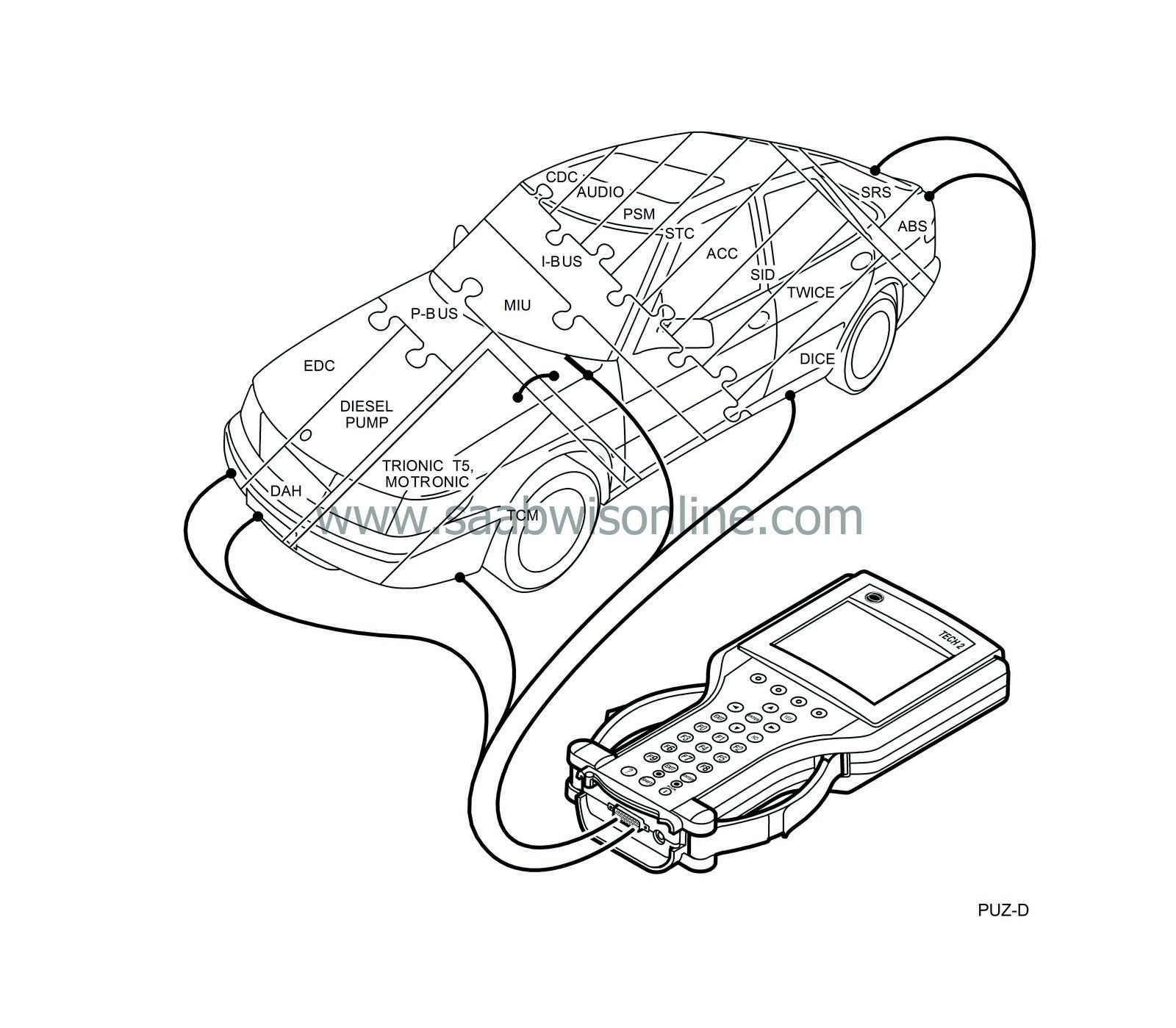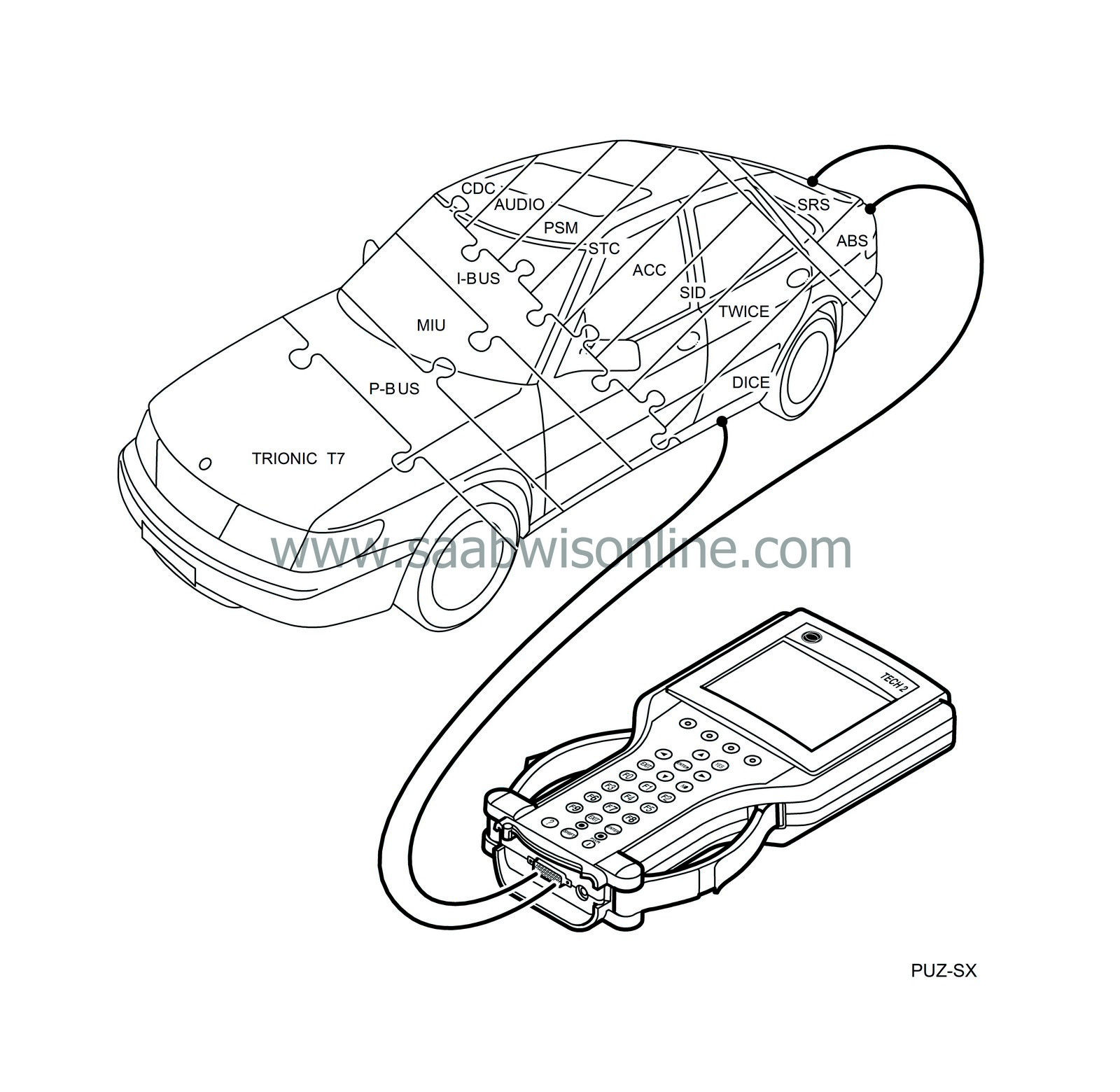System overview, brief description
|
|
System overview, brief description
|
DICE is a comprehensive control system for the electronic functions in the car. The central unit in DICE is a control module which communicates with the system units and with other systems via the car's wiring and the instrument bus (I bus). DICE has its own diagnostics function and diagnostic trouble codes are set when faults arise.
The following functions are controlled by DICE:
|
•
|
Button illumination and lighting for controls
|
|
•
|
Intermittent wiper operation, windscreen and rear window
|
|
•
|
Electrically heated rear window and door mirrors
|
The car's exterior lighting is operated with the main light switch and the left-hand toggle switch combined with the DICE control module.
The following light functions in the car's exterior lighting system are controlled by DICE:
General interior lighting (dome lamps) in the car. Automatic or manual function depending on the position of the light switch.
The following light functions in the interior lighting system are controlled by DICE:
|
-
|
Luggage compartment lighting
|
|
Button illumination and lighting for controls
|
DICE supplies power to the button illumination and lighting for the controls. To enable adjustment of the brightness, DICE pulse width modulates (PWM) the power supply to the bulbs.
If Night Panel on the SID has been selected, the bulbs for button illumination and lighting for the controls will shine at reduced strength.
Acoustic warning if the driver's door is opened while the key is still in the ignition.
Acoustic warning if the parking lights are on and the driver's door is opened while the key is not in the ignition.
The function is programmable.
|
Windscreen and rear window wiper operation, intermittent
|
The interval between strokes of the intermittent windscreen wiper operation can be adjusted between 2 and 15 seconds with a potentiometer located on the wiper stalk switch.
DICE also controls the wipers when the windscreen and rear window washers are operating. During a short wash, the wipers do three strokes and this increases to a maximum of five for longer washing times. The rear window wipers do a few strokes after a certain delay while washing.
The function “Extra strikes” after washing” is programmable.
|
Electrically heated rear window and door mirrors
|
Electric heating of the rear window and door mirrors. It is activated manually or automatically via the car's ACC function or only manually if the car has MCC.
DICE controls the operation of the radiator fan. The car is fitted with either a single-speed or a dual-speed fan system depending on the market.
DICE controls the on/off function on cars with single-speed fans.
On cars with dual-speed fans, DICE controls the speed of the fan (low or high).
DICE uses the following information to control the function:
Control of A/C function. DICE uses the following values to determine whether the A/C compressor should be allowed to operate:
|
-
|
Running time of the engine
|
If DICE allows the A/C compressor to operate, it sends a bus message that is used by the engine management system to activate the relay for the compressor clutch.

 For M99, the Viggen model is fitted with a B235R engine and the Trionic T7 engine management system. The bus system in the Viggen will then be practically identical to that of the 9-5.
For M99, the Viggen model is fitted with a B235R engine and the Trionic T7 engine management system. The bus system in the Viggen will then be practically identical to that of the 9-5.
The bus system on diesel cars is the same as on M98 1/2 models with EDC15 and the diesel pump connected to a bus.
Other petrol-engined versions have an M2.10 or Trionic T5 engine management system and, on cars with automatic transmission, TCM. As before, these systems have no bus connections.
The two power train systems EDC and diesel pump are not connected to the I-bus, however. These systems require
much faster
communication to eliminate noticeable delays, e.g. when EDC requests a certain amount of fuel for injection.
Therefore, they are connected through a separate buss called the P-bus (Powertrain Bus). The P-bus has a data transfer rate ten times higher than that of the I-bus.
The P-bus is also connected to the MIU (Main Instrument Unit). The MIU ensures that the information that is available on one bus is also available on the other.




